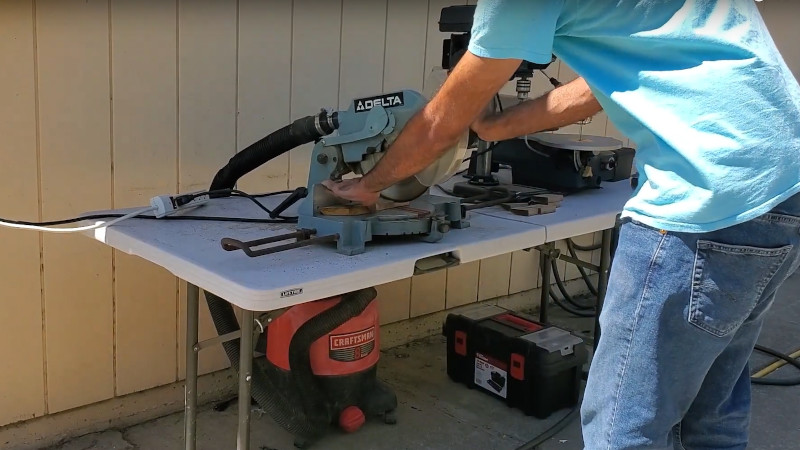Finding cheap or even free tools in the second-hand adverts is probably a common pursuit among Hackaday readers. Thus many of you will like [DuctTape Mechanic], have a row of old woodworking bench tools. The experience we share with him is a lack of dust extraction, which makes his adaption of a second-hand shop vac as an automatic dust extractor for his chop saw worth a watch. Take a look, we’ve put the video below the break!
The system hooks up a relay coil to the saw’s on/off switch, which controls the vacuum’s power. It’s thus not the most novel of hacks, but there are a few things to be aware of along the way and who among us doesn’t like watching a bit of gentle progress on a workshop project? The 120V current taken by both vacuum and saw sound excessive to those of us used to countries with 230V electricity, but the relay is chosen to easily serve that load. What’s nice about the automatic system is that being at the bench is not accompanied by the constant deafening noise of the shop vac, and save for when the saw is in use the bench is both dust-free and mercifully quiet.
If you happen to have a solid state relay in your parts bin, here’s another way to achieve a similar result.
















It’s “adaptation”, instead of “adaption. Third line.
Both are actually valid, but adaption is less used these days, albeit slightly newer.
Here in the UK some years ago some regional power companies gave away “power saver” multiway mains adapters that switch off video and sound equipment when you put the TV in standby, working by sensing current draw on a “master” socket (the TV). I’ve aquired several over the years and use them for exactly the purpose shown here: turn the power tool on, and the vac turns on automatically. Or turn the soldering iron on and and the fume extractor fan turns on automatically.
I use such a master/slave socket outlet in my shop and i have an power extension box connected to the master socket to power all the woodworking tools. Simple cheap and effective ;)
Here at the diy shop the cheap dust/water vacuum cleaners have this allready build in. indeed very handy. Nice idee to build it liket above.
I was also confused to see this, as my shop vac has the same feature.
You plug the tool in to the vac, switch the power switch to position 2, and the vac will come on when the tool draws more than about half an amp, and then continue to run until about two seconds after the tool current draw drops.
I suspect this may be a more recent vac thing (last 10 years), as I have a friend with an almost identical vac, except without the socket.
That said, you could adapt this to higher powered tools.
Just a small curiosity, why run the white through the relay? It is the return path. If it was a 220 system I could understand but this is American half phase 120. Seems unnecessary and you could use the other side of the relay for another accessory. Maybe a lamp to light the cut.
Yes you are right. You don’t have to run the neutral through the relay, I just did to keep the wiring tidy (lol). I do plan on expanding this project for use with my scroll saw as well.
thanks Fred hacker
Some power tools (my table saw for example) are wired for this with an extra socket. Turn on the saw and the vacuum gets power too. Most of the adaptations I’ve seen simply use a single throw light switch plus two outlets on a standard home receptacle box and are left in place since they’re cheap to put together.
I made a similar “load switch” that detects the current flowing through a tool and turns on the vacuum with Arduino. https://youtu.be/dfmcjT2cFxc